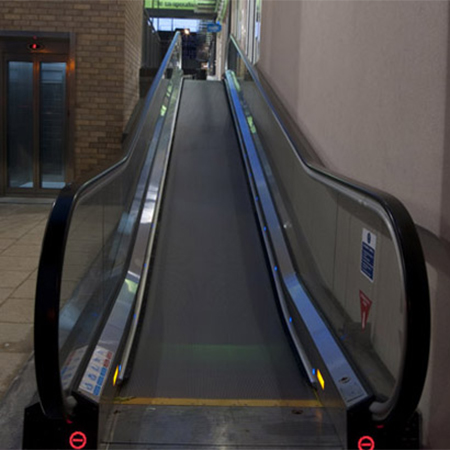BREEAM NC 2018 and Refurb & Fit-out 2014 is the best way to ensure sustainable value and efficiency in your project; within these, you can get BREEAM credits for lifts, escalators, and moving walkways which can help the building achieve the best rating possible.
BREEAM 2018 (Building Research Establishment's Environmental Assessment Method)
The BREEAM rating system awards breeam points for passenger lifts, moving walkways, and escalators in newly constructed buildings. Or for refurbishment and fit-out where there are new or replacement lift systems (for lifts, this would include undergoing major works to existing lifts such as moderations to the lift capacity). Vertical transportation falls under the energy section, with the aim to set breeam requirements for lifts, escalators and moving walkways.
What transportation systems are covered by BREEAM Lifts?
Lifting platforms, wheelchair platform stairlifts or other similar facilities to aid persons with impaired mobility are not included in the criteria.
Any lifting device with a rated speed greater than 0.15m/s must be assessed, including goods, vehicle, and passenger lifts.
Evacuation lifts, used during an emergency only, can be excluded from the relevant BREEAM criteria. However, if these lifts are used during the normal operation of the building, they still need to be assessed.
Ene 06 Energy efficient transportation - credit requirements
It is possible to contribute up to three breeam points for lifts, escalators, and moving walkways by complying with the criteria stated in Ene06.
What maximum points can I get for my BREEAM project from my vertical transportation?
Where only lifts, escalators or moving walks are present, a maximum of two credits is possible. Three credits are available where both lifts and escalators/moving walks are present.
Are you looking for technical information or Energy Analysis?
We can provide energy consumption figures, and BREEAM compliance reports pre-installation to support your evidential requirements. Please get in touch for advice on your lift, escalator or moving walkway selection, and we will be happy to advise further.
Relevant other BREEAM criteria
Under requirements elsewhere for HEA02 - Indoor air quality, MAT02-05 - Materials, WST01- Construction site waste management and MAN04 - Commissioning and handover, Stannah can work with you and supply supporting information on these requirements.
What if my building has no qualifying lifts, escalators or moving walks?
Ene 06 Energy efficient transportation systems will not be assessed where a building contains no lifts, escalators or moving walks. Lifts with speeds of 0.15m/s or less fall outside the scope of ISO 25745 and can, therefore, be excluded from this issue's assessment. This applies, for example, to lifts in single dwellings or those installed in other low-rise buildings, specifically for the use of persons with impaired mobility.
What about extensions?
If assessing a new extension to an existing building, lifts in the existing building fall outside the Ene 06 scope and do not need to be assessed. The above applies only where the lifts are not being renewed.
Are there other regulations regarding vertical transportation I need to be aware of?
There's a whole host of standards when it comes to lifts. If you'd like to understand a little more, then Building regulations: key guidance for lifts, Lift standards glossary and escalator and moving walkways standards glossary are good places to start. But don't worry! A knowledgeable lift company is capable of guiding you through the relevant standards as part of your lift specification
One credit - Energy consumption Image
* Where a single lift is provided in a low-rise building to provide disabled access only; or where a goods lift is selected based on the size of the goods it is intended to carry, a simplified transport analysis can be provided in the form of a written statement from the appropriate member of the design team.
** The use of regenerative drives can add significant cost to your lift and is only suitable in limited circumstances - typically high travel and high-intensity use. Therefore, BREEAM recommends that a regenerative drive should only be considered where it produces an energy-saving greater than the additional standby energy used to support the drives.
BREEAM for Lifts, Escalators & Moving Walkways
| T | 01264 343724 |
|---|---|
| E | contact@stannah.co.uk |
| W | Visit Stannah Lifts's website |
| Watt Close, East Portway, Andover, Hampshire, SP10 3SD |









